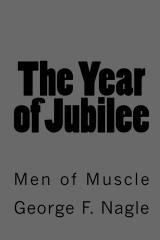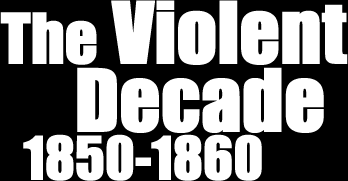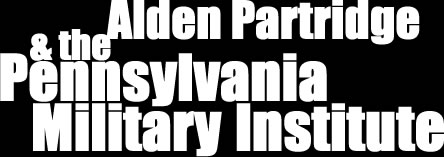
Harrisburg on the eve of Civil War
Study Areas
The Partridge Military School in Harrisburg, 1845-1847
This article by George F. Nagle originally appeared in The Bugle, the newsletter of the Camp Curtin Historical Society.
During the long course of the Civil War, military academies in both the north and south were hard pressed to feed an adequate supply of trained commanders into their respective armies. Despite the presence at the start of hostilities of veteran soldiers from the war with Mexico, many of whom became prominent in the ranks of the north and south, institutions such as the U.S. Military Academy at West Point, the Citadel at Charleston and Virginia Military Institute at Lexington all found their cadets in urgent demand.
The situation would have been worse had it not been for the establishment, years earlier across the country, of numerous local academies specializing in a blend of liberal studies, technical instruction, and military training. Harrisburg had its own such institution, the Pennsylvania Literary, Scientific and Military Institute—later abbreviated to the Pennsylvania Military Institute—which existed from 1845-1847 and turned out 102 graduates, fifty-one of whom would answer the call to service fourteen years later.
Located at the northeast corner of South and Second Streets in a building known then as the Temperance Hotel, the Pennsylvania Military Institute almost immediately filled its rolls with cadets from the local area as well as from neighboring states. A graduate of the institute, George B. Ayres, writing in the late 1800’s, recalled that "State Street—which was then not macadamized, grass-covered and little used—should serve as our drill and parade ground; and the neighborhood being quiet and retired it was a really excellent location."1 The institute opened with ceremonies on April 15, 1845, and on the 16th the cadets began their training with a 5 a.m. drill. Wet spring weather necessitated that drills be conducted inside until the parade grounds dried out, and the cadets conducted their marching exercises in a third-story room of the Exchange Building. However the new cadets drilled so enthusiastically that the building’s owner, fearing that they would shake the old building down, insisted on a move to new quarters, and the institute relocated its inside drills to the hall of the newer Shakespeare Hotel on Locust Street.
The curriculum included an expansion of the "literary" disciplines, or more traditional subjects such as literature and mathematics, with modern languages and history, combined with the "scientific" studies of political economy, agriculture, engineering and physical education. In addition, the military education rounded out the cadets’ character as well as his busy day. It was a curriculum designed to prepare the nation’s youth for roles as responsible citizens, but also as community leaders "prepared to assume duty as military officers in a citizen army."2
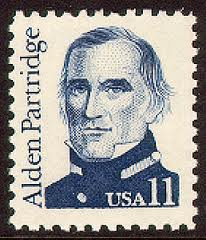 This style of education was deemed to be vital to America’s growth by
the school’s founder, Alden Partridge. As Superintendent of the United
States Military Academy at West Point from 1815-1817, Partridge sought to reform
the academy’s curriculum beyond the classics to include more liberal
studies. He believed the then-current scope of studies to be too narrow for
a nation that was pushing westward at a rapid pace, and experiencing revolutionary
development and change. A new system was needed, he believed, to educate youth
about the source of national wealth—"agriculture, commerce and manufactures," and
by doing so would prepare young men to "discharge, in the best possible
manner, the duties they owe to themselves, to their fellow-men, and to their
country."3 He called his curriculum "The American System of Education."4
This style of education was deemed to be vital to America’s growth by
the school’s founder, Alden Partridge. As Superintendent of the United
States Military Academy at West Point from 1815-1817, Partridge sought to reform
the academy’s curriculum beyond the classics to include more liberal
studies. He believed the then-current scope of studies to be too narrow for
a nation that was pushing westward at a rapid pace, and experiencing revolutionary
development and change. A new system was needed, he believed, to educate youth
about the source of national wealth—"agriculture, commerce and manufactures," and
by doing so would prepare young men to "discharge, in the best possible
manner, the duties they owe to themselves, to their fellow-men, and to their
country."3 He called his curriculum "The American System of Education."4
Harrisburg enthusiastically supported Partridge in the establishment of one of his academies in the town. William Ayres, a local businessman, justice of the peace, former legislator and one of the original incorporators of the Pennsylvania Railroad seems to be the person who contacted Partridge in 1844 to propose the establishment of one of his schools here. Leading citizens including Christian Seiler and Pennsylvania State Adjutant General Diller joined Ayres in support of the school. General Diller pledged the use of the necessary arms and equipment for training. Those arms included Springfield flintlock muskets from the state Arsenal at Harrisburg, which proved to be quite a burden for the young cadets, many of whom were not yet teenagers. At least two of the smallest boys had the privilege of carrying specially made miniature muskets. Partridge also secured from Diller the use of a fieldpiece from the Arsenal to train his cadets in artillery drills. Infantry drill, however, remained the basic foundation for their military training. All equipment was kept at the Institute in a special room known as The Armory. "Here each one had a niche for his musket and hanging place for his cap and belt, which supported the cartridge-box and bayonet-case."5
By summer, daily drills were attracting the attention of Harrisburg residents, who often turned out in the early hours to see the young soldiers go through their two-hour routine. The cadets formed in line opposite the Catholic Church for the roll call, then started off on a slow march toward Third Street. This gradually changed to a quick step, and then back again to the beginning. After drill the cadets went home for breakfast. One remembered observer was Captain (later Brigadier General) Randolph. B. Marcy of the United States Army, detailed in Harrisburg on recruiting duty. Marcy would later lead an expedition to discover the source of the Red River, and his second in command on that expedition would be George B. McClellan. Those roles would be reversed during the Civil War as McClellan requested and received General Marcy as his Chief of Staff. However that was still in the future as the cadets tried their best to impress the numerous local girls who lined the wooden boardwalk along State Street, as well as this distinguished officer, who was often accompanied by his daughter Ellen. Ellen, in turn, would later become the wife of George Brinton McClellan.
The standard cadet uniform was a dark blue hussar jacket with standing collar, single-breasted with silver buttons, single buttons at the cuffs and sides of the collar, and heavily padded. The jackets of the larger boys had small tails. In winter the cadets wore blue pantaloons, and in summer the blues were replaced with white pantaloons. "The cap was blue, encircled with a broad gold band."6 Each cadet paid for his uniform, as well as for a desk with storage room for books, and a chair or stool. Cadets were also expected to provide for their own room and board, although most lived in the borough and ate and stayed at home. Boarding for out-of-town cadets was available with Edwin S. Perkins, the school’s military bandleader. Those cadets who served in the band received free tuition, which was normally $8.00 for a twelve-week term. However these students—two fifers and four drummers—were expected to be "on duty" during the drills and throughout the day, to provide the cadences for drilling and drum calls for assembly.
As the reputation of the Pennsylvania Military Institute grew, so did its chance to take part in public ceremonies. On July 24th, 1845, the Cadet Company participated in a memorial ceremony at the State Capitol honoring former President Andrew Jackson upon his death. Following the eulogy delivered in the House of Representatives by Governor Francis Shunk, they marched in the procession along with the Dauphin Guards, the Harrisburg Rifles, local dignitaries and fraternal organizations. Partridge included field trips as a special treat in the curriculum. A summer excursion to Middletown by canal boat allowed the cadets to exhibit their drill routine for the citizens there. In return the cadets were hosted by Major Brua Cameron, son of Simon Cameron. Another trip in the fall again used canal packet-boat as transportation to Columbia, and then by railroad to Lancaster for a tour of the town.
Despite the popularity of the cadets’ drill with local citizenry, frequent changes in the school’s superintendent and teaching staff took its toll on the curriculum, and by early 1847 its future was in doubt. A half-hearted attempt was made by several prominent local citizens to prop up the next term with aid from the state, but the attempt failed and a small class was enrolled. Most parents had instead turned to the Harrisburg Academy for their children’s instruction. The Partridge school closed before the completion of its third term. Although his efforts in Harrisburg came to a premature close, Alden Partridge’s American System continued to thrive throughout the country. A school established in 1847 in Mount Sterling, Kentucky remained open. In 1850 he established schools in Reading, Pennsylvania and Pembroke, New Hampshire, and in 1853 established a school in Brandywine Springs, Delaware. In the South, the Virginia Literary, Scientific and Military Academy at Portsmouth remained open until the Civil War. In addition, Partridge provided the legislative support behind the creation of two state-funded military colleges: the Virginia Military Institute at Lexington, and the Citadel at Charleston, South Carolina.7
Graduates of the Pennsylvania Military Institute at Harrisburg included many who would shape the future of the city, and who would provide valued leadership during the Civil War—on both sides. Napoleon B. Baker served in the Confederate army as an officer and died in battle at Marietta, Georgia. Christian Frazer had moved south and initially volunteered for service as a Confederate officer, but resigned and returned to the north before the war ended. Andrew Jackson Johnson served in the Crimea as a Russian surgeon, earning an Imperial decoration before returning to the southern United States and serving as a surgeon in the Confederate army. Another cadet, John McGee supposedly died as a Confederate officer in the western theater.
Serving as officers in the United States Regular Army were Louis DeWitt (Engineer, U.S. Army, Fortress Monroe), Lafayette Hammond (1st Lt., 23rd Infantry), John Bucher Johnson (Captain, 6th Cavalry), James R. Kemble (Capt., 3rd Cavalry), James K. Lawrence (Captain, 11th Infantry; wounded at Fredericksburg), Sylvester Mowry (U.S.M.A. 1852; 1st Lt. 3rd Artillery), Alexander Piper (U.S.M.A. 1851; Chief of Artillery, 18th Army Corps), James W. Piper (1st Lt., 5th Artillery) and Francis John Shunk (U.S.M.A.; Chief of Ordnance, First Military District of Virginia, 1867). Richard Crain Dean served in the U. S. Navy as a surgeon, and in 1873 was commissioned medical inspector.8
Seeing service in the Federal army were:
Julius Blattenberger
Charles Carroll Bombaugh (Surgeon, regiment not known)
Theodore Castle (Surgeon, regiment not known)
James Dennis Dougherty (Captain, Independent Artillery Company, 1862)
William Henry Egle (Surgeon, 47th PVI; Surgeon of Volunteers, 1864)
William C. Evans (Surgeon, regiment not known)
Andrew Jackson Foster (QM Sgt., 25th PVI)
Charles E. Hackley (Surgeon, regiment not known)
Philip D. Haines (Lt., 124th PVI)
William H. Harris (Capt., 9th Penna. Cavalry)
Samuel Holman (Chaplain, 48th PVI)
Elmer Jennings (Capt., 12th Penna. Cavalry)
John Brua Keefer (Paymaster, U.S. Army)
Arthur D. Markley (Surgeon, regiment not known)
Henry McCormick (Capt., 25th PVI; Col. 1st Penna. Emerg. Militia)
Gilbert Parker (Lt. Col., 28th PVI)
Frank Partridge (Capt., Illinois Vol. Inf.)
Erasmus Rehrer (Capt., Co. E, 129th PVI; wounded at Fredericksburg)
Henry Orth Witman (Lt., 6th Penna. Militia; Capt., 36th Penna. Militia)
Some cadets served in state and national government positions. Three were members of the Pennsylvania House of Representatives and one, Richard Jacob Haldeman, was a U.S. congressman in the 41st and 42nd Congresses. Others distinguished themselves in business, law and other professional pursuits. Most were community leaders wherever they finally settled.9 In all, this extraordinary class of cadets gave credence to Alden Partridge’s American System of Education, the basics of which would eventually be incorporated into the Morrill Land-Grant Act of 1862 that established a national system of agricultural and technical colleges. The Pennsylvania Literary, Scientific and Military Institute at Harrisburg may be only faintly remembered, but the legacy of its graduates enriches us to this day.
References
1. George B. Ayres, "Partridge’s Military School at Harrisburg" in William Henry Egle Notes and Queries, Vol. 1. (Harrisburg, PA.) Page 68.
2. Gary Thomas Lord, "Alden Partridge’s Proposal for a National System of Education: A Model for the Morrill Land-Grant Act" in History of Higher Education Annual, Vol. 18, The Land Grant Act and American Higher Education: Context and Consequences. Pennsylvania State University. (University Park, PA. 1998. Web address: www.ed.psu.edu./hied/annual).
3. Alden Partridge, "Lecture on Education" reprinted in Francois Peyre-Ferry "The Art of Epistolary Composition (Middletown, Conn., 1826), 263-280, quoted in Lord.
4. Lord, "Alden Partridge’s Proposal for a National System of Education."
5. Ayres, "Partridge’s Military School at Harrisburg," pages 78-79.
6. Ibid., 68.
7. Lord, "Alden Partridge’s Proposal for a National System of Education."
8. Ayres, "Partridge’s Military School at Harrisburg," pages 62-67.
9. Ibid.
The Year of Jubilee
Vol. 1: Men of God and Vol. 2: Men of Muscle
by George F. Nagle
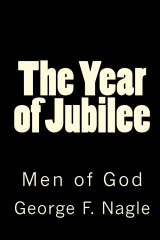 Both volumes of the Afrolumens book are now available to read free on this site.
Both volumes of the Afrolumens book are now available to read free on this site.
